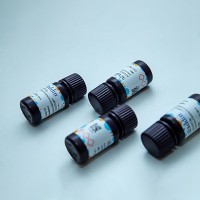Dynamic Labeling Techniques for Fate Mapping, Testing Cell Commitment, and Following Living Cells in Avian Embryos
互联网
592
Specific groups of cells in avian embryos can be marked using a variety of techniques and labels. Which type of technique is used depends on the purpose of the experiment. For example, individual cells can be labeled by iontophoretic injection (1 ) or retroviral infection (2 ), and clones of cells derived from these individuals can be evaluated to gain information on the state of commitment or potency of their labeled ancestor. Protein or RNA can be labeled by immunocytochemistry or in situ hybridization, respectively, to assess cell differentiation or to infer the functional role of specific genes from their temporal and spatial patterns of expression. Groups of cells that have been labeled in place with extracellular microinjections of fluorescent dyes, or tissues obtained from whole embryos that have been soaked in fluorescent dyes and subsequently grafted to unlabeled embryos, can be followed over time to yield information on cell fate or commitment. In addition to these considerations that relate to the purpose of the experiment, there are several other considerations when selecting labels, as different labels have different attributes (Tables 1 and 2 ) that may help or hinder the investigator in interpreting experimental results. These include the method of visualization (fluorescence, immunocytochemical, histological), subcellular localization (nuclear, cytoplasmic, membranous), compatibility with other markers or techniques (i.e., for double labeling), specificity (species, regional, tissue), and reliability. This chapter will deal principally with strategy and the labeling techniques used with early avian embryos to ascertain cell fate and commitment and with a number of specific labels that can be selected to facilitate the interpretation of these types of experiments.









